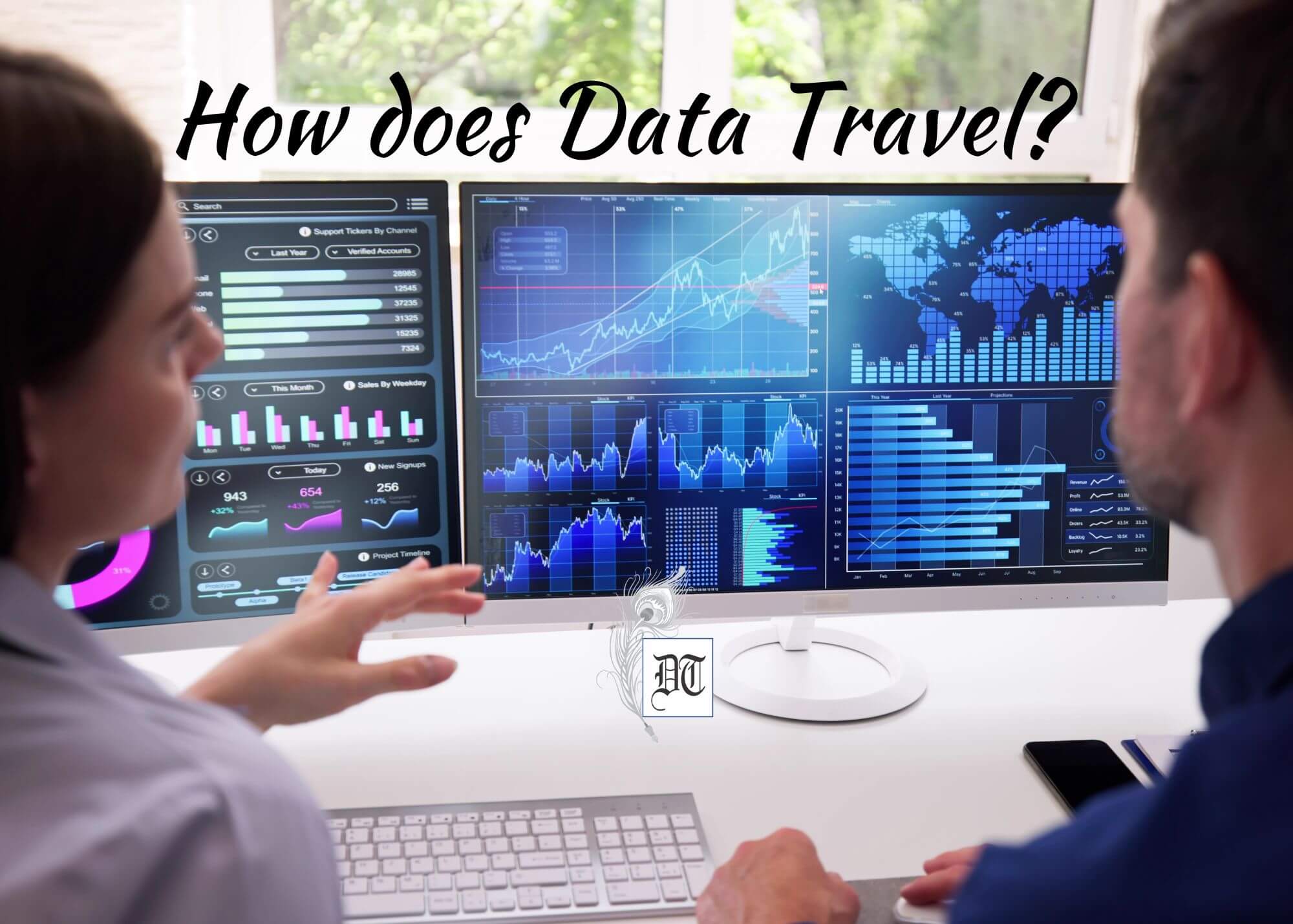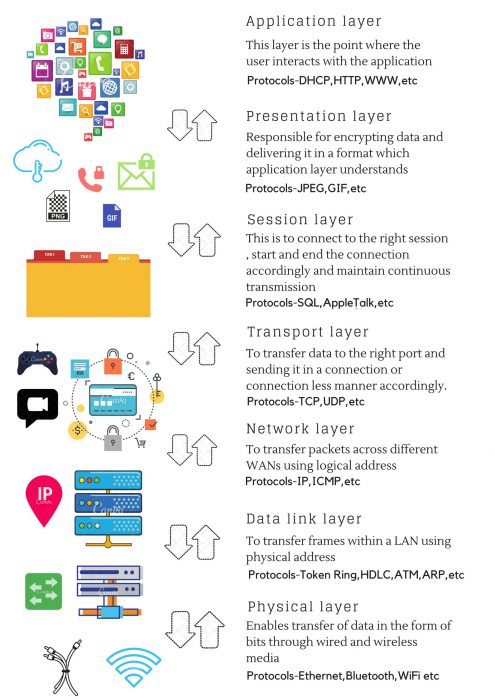Tanya tells us how data travels, on the Internet, exclusively for Different Truths.
In today’s world of technology, we use different applications for various purposes. For almost everything, there is an application like budget planning, fitness tracking, instant messaging, video conferencing, online transactions, etc. But how does all this work? What’s the underlying functioning of it? Ever thought about it?
It’s pretty simple, we start with the base layer where we have our wired media the one connecting to the home router or wireless media (WiFi, Bluetooth, WiMax) the data travels as signals through this in the form of bits (1’s or 0’s). 1 indicating high and 0 indicating low voltage respectively. This is the physical layer.
After crossing the physical layer we have switches which guide frames (encapsulated data) through the Local Area Network. Encapsulation is used to identify the data uniquely to the layer. The MAC address or physical address which is unique to every device is used by this layer to identify the right device/destination. The MAC address is burned onto Network Interface Card (a computer hardware component that connects a computer to a computer network), which is there in every device. This happens in the data link layer.
But what about communicating across networks at a larger scale (Wide Area Network), across the country or globally (Internet)? We would need a router to route our encapsulated data (packets) through the small networks (LAN), which integrated together make our WAN. The network layer uses Internet Protocol address, which isn’t unique and changes as it’s assigned according to the location. For example, you go to a coffee shop and get an IP assigned and once you leave it isn’t there and will change in future. The assignment is carried out by the Dynamic Host Configuration Protocol server
The exchange of encapsulated data (segments) can be either connection-oriented (Transmission Control Protocol) like in ATM transactions or connectionless (User Datagram Protocol) oriented while video conferencing, gaming etc. the latter provides faster communication but unlike former less secure. The transport layer also insures the port (an endpoint of communication in an operating system) where the data needs to be submitted. It should be noted that different layers use different protocols, which govern communication across a network.
After we have decided on the exchange depending on the networking service the app uses, we come to the session layer. We always tend to switch between apps, from WhatsApp to Instagram or just the normal tabs on a browser, and it’s always executed effectively because of this layer which is responsible for starting and ending sessions accordingly. It also guarantees continuous transmission of data.
But data has various formats such as PNG, GIF, and JPEG for images, PDF, DOC for text etc. This is ensured by the presentation layer along with encryption, which is used in the blockchain, logging in a secure account.
Now, the data is ready to be presented to the application layer where the user interacts with the application seamlessly. No longer seamless though. Common protocols being used at this layer: HTTP, www, etc.
Infographics by author and picture design Anumita Roy
#DataTravel #WaysThroughWhichDataTravels #FormatsOfData #NetworkService #Applications #NextGen #DifferentTruths







 By
By


 By
By